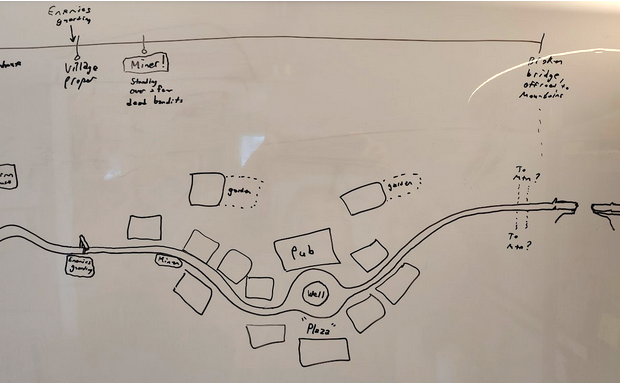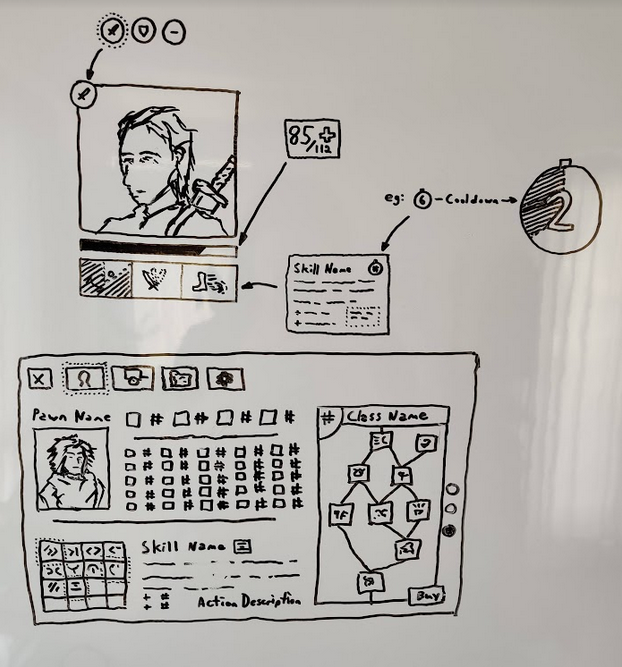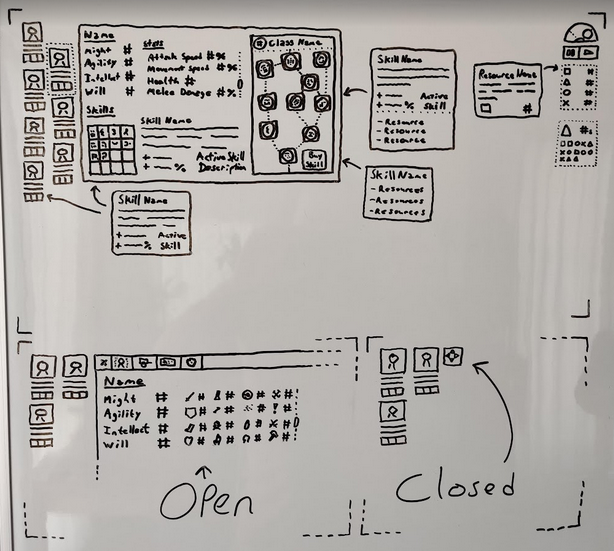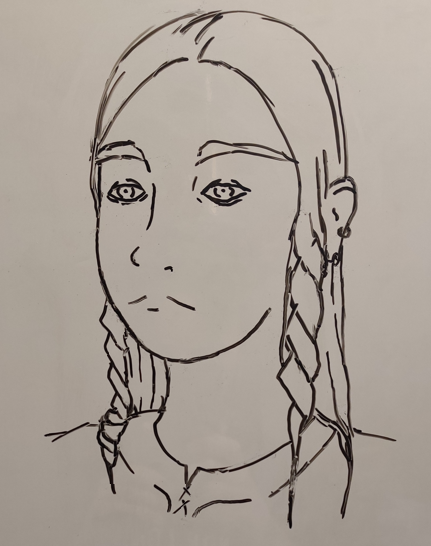I’m Worried The Baby Thinks People Can’t Change
April 19th, 2023
Our last eight months of development have been an amazing experience. We’ve built so much gameplay and have overcome many technical challenges. It’s time for some reflection about what we’ve created and what comes next.
What We’ve Done So Far
Last September we began working full time on our game. Before this, we did not have any biomes, unit leveling, or anything else that would resemble a game. We only had our RTS style unit controls, a couple of production ready models, and poorly optimized graphics.
As of now, we have about two hours of gameplay created, spanning a large foothills biome. Within this biome, there are numerous enemy ambushes, a vendor for exchanging resources and hiring new units, NPCs to aid, and nature to explore. Designing and implementing our first biome came with many challenges, and in the end, it will most likely be the biome that took us the longest to make.
We’re currently working on a new biome: rocky mountains. We have also created a high level plan for the remainder of the game, and we will plan each new area’s full details once we’re actually ready to build them. We’ve found that new gameplay ideas are constantly born out of user testing and deep thoughts, so we’re keeping things agile™.
Our user testing team is doing an amazing job of letting us know where the fun is, and finding every bug imaginable. Without their efforts, we would just be guessing if our new features were fun, or even tolerable.
Favorite Achievements
Designing and modeling our caravan pulling creature
When we first started creating our game, our 3d artist, Hollie, had limited experience with modeling, rigging and animating 3d models. Luckily, the program we use for our modeling, Maya LT, provides a handy tool called HumanIK to simplify the rigging process for humanoid models. However, this tool does not lend itself well to the rigging of quadruped models, so creating a creature to pull the caravan presented plenty of challenges. Initially, we were going to create something fairly basic and expected, such as a horse or donkey. However, part way through the design process, we changed our minds and decided to base our creature off of the cutest rodent in all the land instead - the capybara! We ran into some issues rigging it properly, but in the end, we are happy to have designed a creature that is unique to our game and love how it turned out.
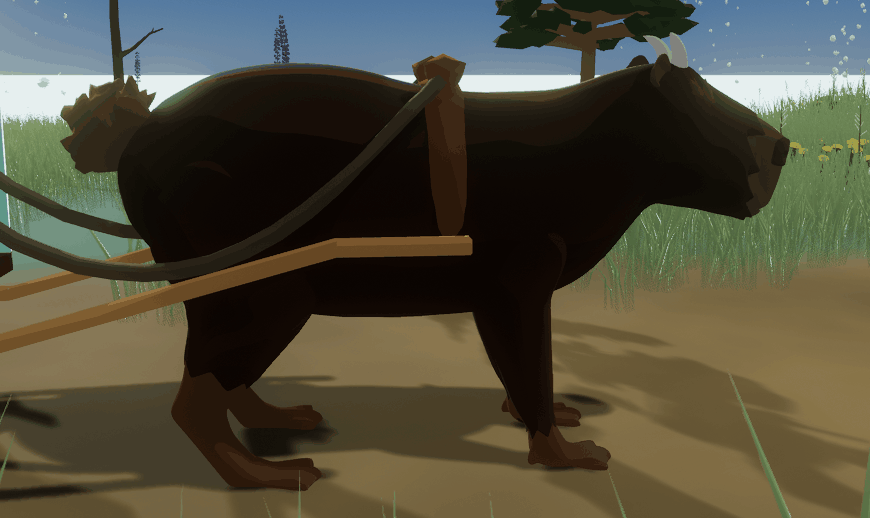
Nap time
Skill trees
We’ve been playing ARPG games like Diablo since childhood, and MOBA games like DOTA 2 for years. Building up a character with skills and stats is a staple gameplay element that we’ve really enjoyed creating for our game. Giving the player agency in how their team progresses and how they utilize each unit’s strengths and weaknesses creates a sense of depth and replayability that we’ve come to love. Of all of our game’s features, this is the one Addison likes best.
Biggest Challenges
Skin weighting characters
When we create a new character for our game, the process we follow is:
- Sketch the character
- Model the character
- Create the skeleton (we use the HumanIK tool in Maya LT whenever possible) and then bind it to the model
- Adjust the skin weights that result from the binding process
- Animate the character
Every part of this process is rather enjoyable, with the exception of step 4. Skin weighting is important as it determines how the model reacts during the animation process. However, perfecting the skin weights for a model can be tedious, frustrating and time consuming. It’s been a steep learning curve to figure out this part of the process, but it gets a little easier with each new character we add to our game.
Parenting a toddler while developing a video game
We are currently splitting our time between developing our game and parenting our child. Our work days revolve around our toddler’s nap schedule: one of us watches our toddler in the morning, we both work while he naps, and then the other parent watches them in the afternoon until dinner time. Once our child has gone to bed in the evening, we’re able to complete a few more hours of work before calling it day. This schedule limits the amount of time that we have to work together, so most of our meetings take place over lunch/ during nap time. It also means that we work an unusual schedule - our work days are fragmented and typically start around 10am and don’t wrap up until 11pm. Working at home with an energetic toddler also means that from time to time, said toddler will try to peel your fingers off of your keyboard and mouse and insist on sitting with you while you work, or they’ll wake up early from their nap which cuts into our plans for that day’s work. Flexibility is the name of the game. Luckily, this schedule has been working well for us so far, and while it’s not without challenges, it keeps things interesting and allows us to spend plenty of time with our child as they grow older.
Perf
Ensuring our game runs smoothly has been a serious effort from the beginning. We wrote a post that covers some of our performance challenges, and we continue to encounter new obstacles. After every major feature is implemented, we like to circle back and do performance profiling of both our gameplay code and graphics. Near the start of our project, the biggest concern was about using skeletal meshes for the units. Skeletal meshes can have substantial computational cost, both in terms of gameplay and in graphics, but we’ve been able to reduce this cost to the point where they are nowhere near a top performance concern.
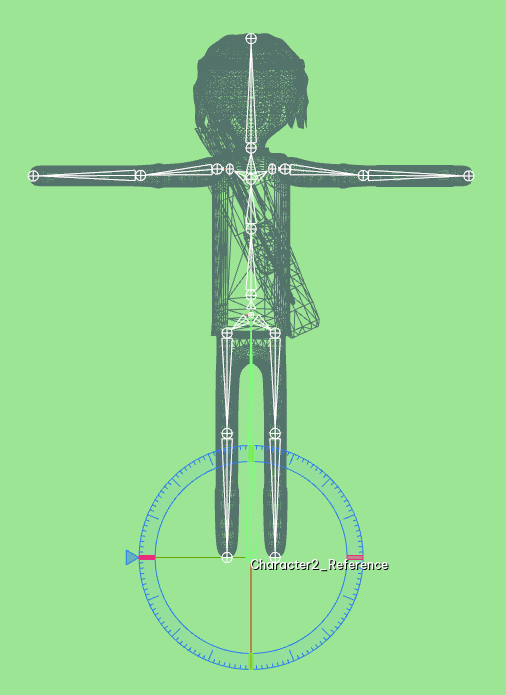
Next steps
Upcoming Levels
The player’s journey in the game will lead them through various environments. We aim for each to be distinct, and to provide unique gameplay and story experiences. We currently have a foothills biome and are starting work on a rocky mountains style environment. In the future we’ll be creating a dark and menacing swamp, an arid prairie that leads into a desert, and finally a broadleaf forest.
Steam
We recently completed the process of setting up our business account on Steam and our next focus is finalizing our visual assets (game logo, gameplay videos, screenshots) so that we can get our Steam page up and running. We have quite a bit of work to do but are hopeful to have our game’s Steam page set up in the next month or two.
Sound Design
When we sent out our game for the first round of user testing, we recorded a single song which clocks in at around 30 seconds. Needless to say, it’s a tad repetitive to listen to when you play the game for more than a few minutes. We’re putting time aside every week to write music and hope to expand the soundtrack in the coming weeks and months!
At this time our sound effects are quite minimal. We have an effect for each of the 4 weapon types when attacking, the rolling wheels of the caravan, chirping insects, and the rumble of impacts in the distance. Each of the sound effects we use has its volume attenuated based on its distance from the player’s camera. In terms of performance we’ve found that there are so many different interactions that could make sound for the player to hear, so we’re going to need to be conscious about which sounds we choose to include. We’ve also limited the number of times each sound can be playing concurrently. There can be a lot of arrows flying around when things get heated 🌶️
Our preferred method of brainstorming is drawing things on our whiteboard. Here are some whiteboard session results we’ve had over the last couple of years. Thanks for reading!
